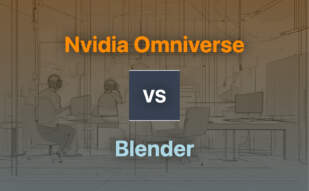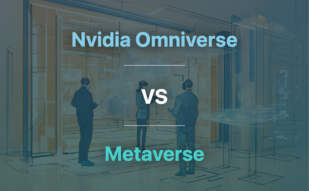
Nvidia Omniverse
Steered by Nvidia’s 20+ years of expertise in AI, rendering, and simulation, Nvidia Omniverse brings forth an OpenUSD-based 3D computing platform. Enhanced with Nvidia RTX technology, Omniverse refines complex 3D workflows and fosters real-time connectivity and customization.
Nvidia Omniverse Top Features
- Unified Scene Description (OpenUSD) for robust 3D workflows.
- Leverages Nvidia RTX technology for optimum scalability.
- Enables individuals and teams to connect and customize 3D pipelines.
- Omniverse SDK facilitates app, extension and microservice development.
- Support for popular software like 3ds Max, Maya, Revit, Rhino, SketchUp, Unreal Engine via connector plugins.
| Feature | Explanation |
| OpenUSD Base | Relies on OpenUSD for establishing interconnected extensions and apps. |
| Flexible Licensing | Standard, Enterprise, and Cloud licensing options to suit a variety of user requirements. |
| Omniverse Exchange Publishing Portal | Allows developers to publish Extensible, Optimized apps. |
Nvidia Omniverse Limitations
- Initial learning curve for OpenUSD and SDK-based app development.
- Enterprise pricing may be steep for small businesses or startups.
- Potential dependency on Nvidia’s ecosystem.
Nvidia Omniverse Pricing
Omniverse Enterprise is priced from $9,000 p.a., encompassing Omniverse Nucleus, Connectors, Create, View, Kit, and Launcher, along with support. Standard Omniverse license is intended for individuals and developers, granting free access to OpenUSD and 3D workflows implementations. Lastly, Omniverse Cloud is tailored to provide a full-stack cloud environment for industrial metaverse application development.
Nvidia Omniverse Use Cases
Use Case 1: 3D Pipeline Customization
Omniverse, with its OpenUSD foundations and Nvidia RTX integration, empowers developers to tailor their 3D pipelines. This equips teams with the flexibility to govern their workflows and improve efficiency.
Use Case 2: App Development
Developers can leverage the Omniverse SDK to create diverse apps, extensions, and microservices, opening avenues for solution monetization through the Omniverse platform.
Use Case 3: Interoperable Workflows
Larger organizations can utilize the Omniverse Enterprise license to establish interoperable workflows for on-premises applications, boosting collaboration and consistency across different project phases.
Unreal Engine
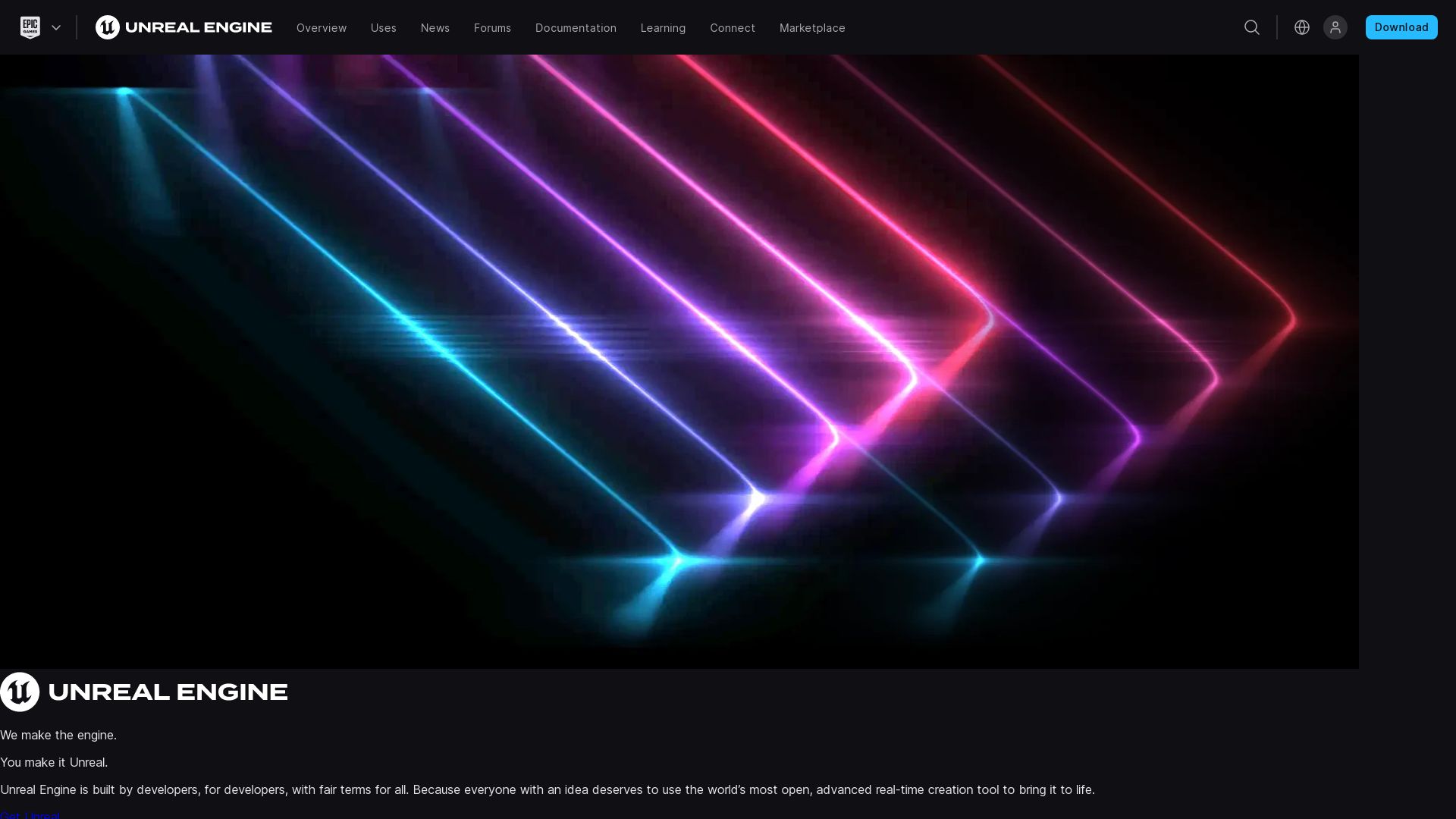
The Unreal Engine (UE) is an innovative series of 3D computer graphics game engines developed by Epic Games. Making its first appearance in 1998, it has greatly evolved while expanding its reach to various industries like film and television. The UE is written in C++ and supports a versatile range of platforms.
Unreal Engine Top Features
- Supports a broad range of platforms (desktop, mobile, console, VR).
- UnrealEd, a real-time constructive solid geometry operation editor.
- Incorporates advanced features from companies like Quixel.
- Progressive Unreal Development Kit (UDK) supporting iOS game and app creation.
- Unreal Engine Marketplace for robust creation and trading flow.
| Engine Version | Key Feature |
| Unreal Engine 3 | Open for modders |
| Unreal Engine 4 | Free for all users, charging 5% of substantial revenue |
| Unreal Engine 5 | Latest version, launched in April 2022 |
Unreal Engine Downsides
- Royalty model: Epic Games charges 5% of revenues over USD 1 million for commercial use.
- Learning curve: Mastering the environment needs adequate experience with C++ programming.
Unreal Engine Pricing
Unreal Engine offers an intriguing model where it’s free to use, but for commercial products generating over $3,000 per quarter, a royalty fee of 5% is applied.
Unreal Engine Use Cases
Use case 1: Game Development
With its origins in the gaming industry, Unreal Engine excels in creating riveting first-person shooters and various other game genres.
Use case 2: Film and Television Industry
Beyond gaming, Unreal Engine serves the film and television industry, contributing to creating imaginary and real-world simulations.
Use case 3: Education
Unreal Engine is massively adopted in schools and universities, igniting creativity while teaching students about the future of content creation.
Unity

A cross-platform game development engine, Unity has been at the forefront of 3D and 2D game creation since its inception in 2005. Its adaptable nature across various operating systems extends its use beyond just game development, paving way for applications ranging from Augmented Reality to intricate 3D simulations.
Unity Top Features
- Interoperability: Enables developers to launch games on Android, iOS, and several other platforms
- Extensive Tool Suite: Offers a comprehensive range of tools, rendering technology, and features supporting high-quality creation
- Rich Asset Store: Integrated with diverse pre-designed textures and features, stimulating creative game designs
- Coding Language Variety: Offers support for BOO script, Javascript, and C#
- Active Developer Community: Facilitates assistance, problem-solving, and collaborative improvement
| Feature | Benefit |
| Unity 3D | Enables creation of sophisticated games with a blend of 3D and 2D elements |
| Continuous Tech Evolution | Improves user-friendliness, compatibility, and immersive visual experiences |
| Inclusivity of AR/VR Features | Enhances game interactivity and engagement |
Unity Limitations
- Changing Pricing Structure: Expected to impact indie developers and those with high-install games
- Sudden Policy Shifts: Absence of prior communication creating mistrust among users
- Geographical Disparity: Higher install fees in standard markets like US, UK compared to emerging markets
Unity Pricing
The fee-based model has Unity developers paying each time their game is installed. A new pricing system effective from January 1, 2024, establishes that developers will not be charged an install fee until their game earns a revenue of $200,000 or it surpasses 200,000 installations. Unity provides both free and paid versions packed with useful features. Previous subscription tier, Unity Plus, is no longer offered.
Unity Use Cases
Use Case 1: Mobile Game Development
Unity’s cross-platform adaptability makes it an excellent solution for mobile game developers. Its vast libraries and pre-designed assets facilitate the production of highly immersive, engaging mobile games.
Use Case 2: AR/VR Game Development
Unity extends its capabilities to the growing field of AR/VR. Developers can leverage Unity’s potent tool suite and extensive resources to create uniquely interactive and lifelike AR/VR experiences.
Use Case 3: Indie Game Development
Despite the fear of increased install fees, Unity remains an inviting platform for indie developers. Its robust features, active community, and affordable entry option aid new and solo developers in creating standout games.
Unity Reflect

An application suite born from a partnership with Autodesk, Unity Reflect bridges the gap between CAD/BIM and Unity’s engine. Equipped with extensive features and available in two variants – Reflect Review and Reflect Develop, it is designed to streamline design iteration and enable impressive AR/VR experiences.
Unity Reflect Top Features
- Integration with Autodesk Revit, Navisworks, BIM 360, SketchUp, and Rhino
- On-premises or cloud-hosted server options
- Capability to handle unlimited projects
- SDK for custom application development
- Enhanced multi-user collaboration with built-in voice chat and measurement tools
| Version | Key Features |
|---|---|
| Reflect Review | Real-time changes, support for various plug-ins, and a live link to original models |
| Reflect Develop | Development of custom applications, APIs for BIM data streaming, and open-source app availability |
Unity Reflect Disadvantages
- Pricing might be steep for some users, with Reflect Review costing $690/year and Reflect Develop requiring additional investment.
- Guest users can only access projects via shared link, consuming a Collaborate license from the user’s pool.
Unity Reflect Pricing
Reflect Review costs $690/year, while Reflect Collaborate is priced at $149/year. Note that the licenses for Review and Develop are user-specific, with Collaborate licenses forming a pool if not assigned to specific users.
Unity Reflect Use Cases
Use case 1: AEC Firms
Unity Reflect has showcased its utility through SHOP Architects for tracking construction progress and performing acoustic simulation.
Use case 2: Software Developers
With the Reflect Develop, software developers can build custom applications atop Unity Reflect, utilizing APIs for custom plug-ins.
Use case 3: Multi-device Visualization
Unity Reflect excels in supporting real-time 3D visualization across multiple devices, making it ideal for professionals needing instant access to design iterations.
Unreal Engine 5
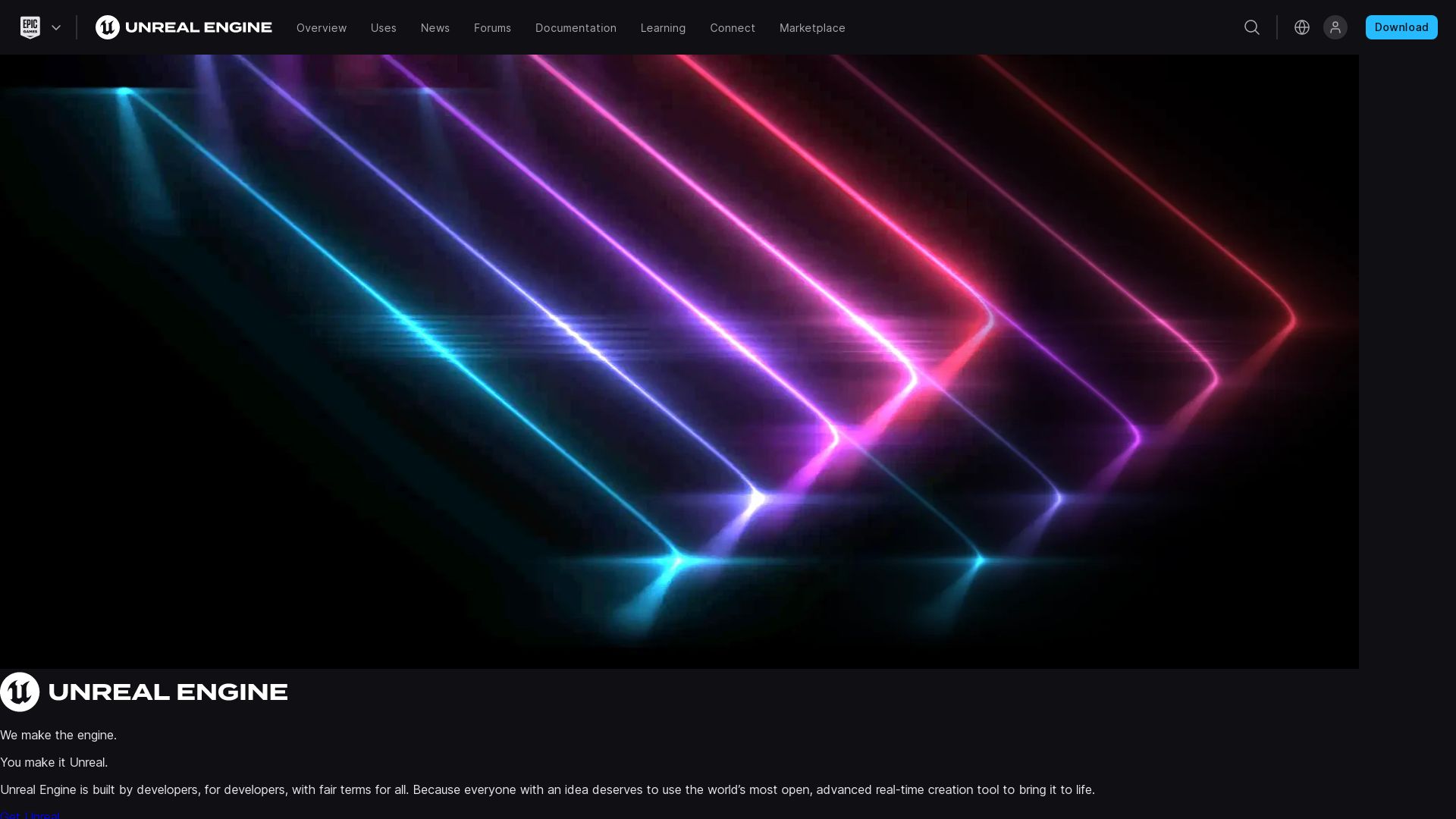
The brainchild of Epic Games, the Unreal Engine 5 brings next-gen real-time 3D content creation to your fingertips. Crafted with meticulous attention to detail, this advanced tool bears testament to Epic Games’ commitment to visual dynamism and spatial realism.
Unreal Engine 5 Top Features
- Nanite: Allows for the creation of incredibly detailed worlds and tackles million-polygon meshes at a real-time frame rate.
- Lumen: Offers dynamic global illumination and reflections, permitting indirect lighting to instinctively adapt to changes in lighting or geometry.
- Temporal Super Resolution (TSR): Furnishes a built-in upsampling system, enabling low-res rendering with peak pixel fidelity and aiding 60 fps performance.
- World Partition: Streamlines level management, segmenting the world into a grid and streaming necessary cells for effective team collaboration.
- Control Rig: A robust animation authoring toolset that streamlines the creation process.
| Feature | Brief |
|---|---|
| Nanite | Creates detailed worlds, processing multi-million-polygon meshes at real-time rate. |
| Lumen | Provides dynamic illumination and reflection, allowing indirect lighting to adapt on-the-fly. |
| Control Rig | Offers inbuilt animation authoring toolset, expediting creative process time. |
Unreal Engine 5 Limitations
- Considering the intricacy of the engine, it may pose a learning curve for beginners.
- Building expansive, detailed worlds with high-polygon counts can be resource-intensive for less powerful hardware.
- Royalty fees levied after crossing a revenue threshold can increase financial burden for budding game developers.
Unreal Engine 5 Pricing
Unreal Engine 5 is freely accessible, with a catch: once a game’s lifetime gross revenue crosses $1 million, Epic Games charges a 5% royalty fee. Interestingly, this royalty fee gets waived for games published on the Epic Games Store.
Unreal Engine 5 Use Cases
Use case 1: Immersive Game Development
Unreal Engine 5’s advanced features like Nanite, Lumen, and Control Rig empower game developers to create immersive and graphically-rich games that captivate players.
Use case 2: AR/VR Experiences
Unreal Engine 5’s high degree of realism and expansive worlds facilitate the creation of immersive AR/VR experiences, setting a new standard in digital reality.
Use case 3: Simulations
With detailed world creation and real-time adjustments to lighting and geometry, Unreal Engine 5 offers the necessary tools for creating high-fidelity simulations across various industries from architecture to defense.
Blender
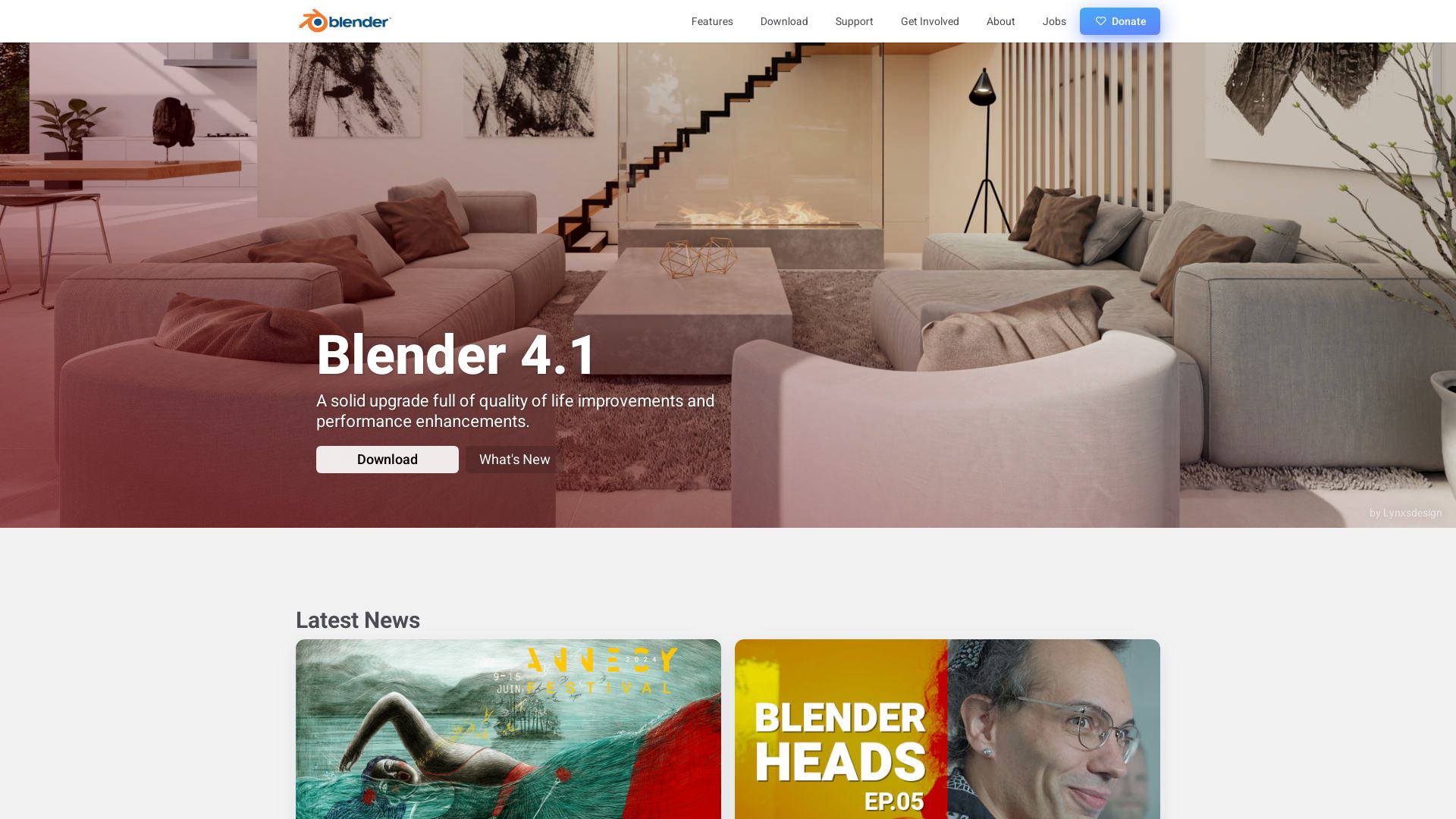
Meet Blender, an open-source 3D computer graphics software tool set, developed initially by the Dutch animation studio, NeoGeo. Used for creating an array of multimedia applications ranging from animated films to virtual reality, it’s a comprehensive suite for 3D graphics and modeling enthusiasts.
Top Features of Blender
- 3D Modelling: Sculpt, shape and manipulate virtual objects in 3D space.
- UV Mapping and Texturing: Enhance your 3D models with detailed surface texture.
- Digital drawing: Embrace your artistic prowess with Blender’s digital drawing features.
- Fluid and Smoke Simulation: Create realistic fluid and smoke effects for enhanced scene realism.
- Sculpting and Animation: Bring your creations to life with dynamic movement and expression.
- Rendering: Convert 3D models to 2D images and animations, favoring the Eevee renderer.
- Video Editing and Compositing: Edit and arrange video clips for a full animation sequence.
| Supports OS | Language | Supported 3D File Formats |
|---|---|---|
| Linux, macOS, Windows, BSD, Haiku | Available in 36 languages | Alembic, 3DS, FBX, DXF, SVG, STL, UDIM, USD, VRML, WebM, X3D, OBJ |
Limitations of Blender
- Blender Game Engine became deprecated in the 2.8 release.
- The Blender Internal renderer was removed in the 2.80 release.
- Given its extensive features, the learning curve can be steep for beginners.
Blender Pricing
Since Blender is an open-source tool, it comes completely free of cost.
Blender Use Cases
Use case 1: 3D-printed Models
Blender is highly useful for designing and crafting 3D models for printing. Engineers, architects, and artists will find this feature invaluable for prototyping and tangible design.
Use case 2: Animated Films
Film producers and animators can utilize Blender’s extensive tool set to create detailed and expressive animations for storytelling purposes.
Use case 3: Virtual Reality
For creators in the field of VR, Blender offers comprehensive tools to craft immersive and interactive 3D applications.
CUDA
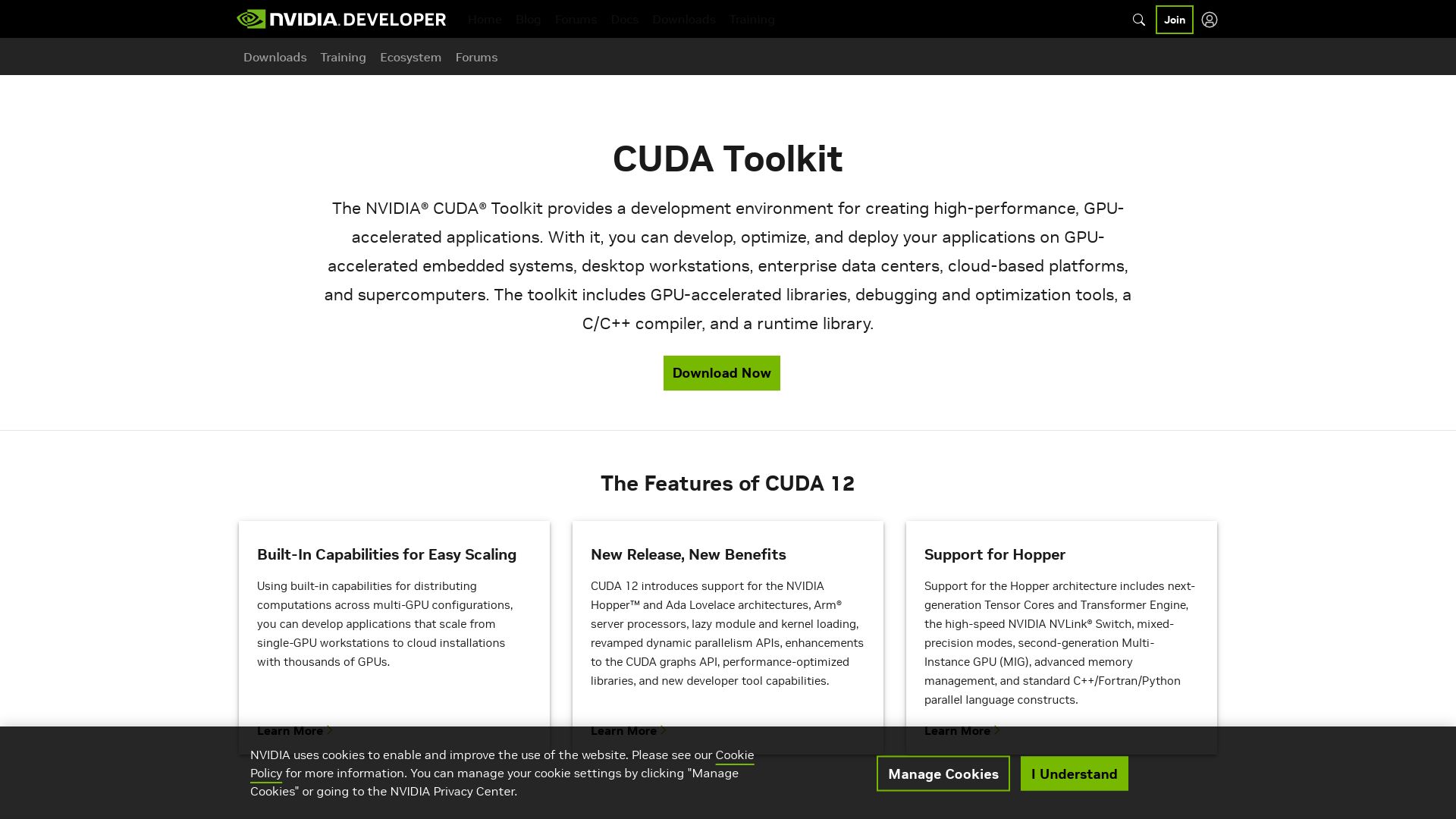
Developed by Nvidia, CUDA or Compute Unified Device Architecture, is an extension of C/C++ programming designed for GPU programming. This parallel computing platform and API model is highly beneficial for accelerating applications from fields as diverse as astronomy, biology, and chemistry.
CUDA’s Best Features
- High processing speed: CUDA offers 30-100x speed-up in comparison with microprocessors owing to parallel computations enabled by over 100 million deployed GPUs.
- Multiple architectures: CUDA provides flexibility with its capacity to function under various architectures—16 Streaming Multiprocessor (SM) diagrams, GT200 with 30 SMs, G80 card with 16 SMs.
- Extensive thread support: With the ability to accommodate thousands of threads per application, CUDA ensures efficient computation requirements.
- Efficient memory management: CUDA features G80 chips with 86.4GB/s memory bandwidth and an 8GB/s communication channel with CPU. Threads within the same block share memory, enhancing computational efficiency.
| CUDA Program Flow | Benefits |
|---|---|
| Loading data into CPU memory | Optimized performance owing to the use of efficient memory bandwidth |
| Copying data from CPU to GPU memory | Seamless communication between CPU and GPU |
| Calling GPU kernel using device variable | Effective utilisation of available hardware resources |
CUDA’s Limitations
- Unilateral Interoperability: CUDA functions are limited to NVIDIA hardware only.
- Support limitations: CUDA struggles with extending support to older versions of hardware or software.
- Source code restrictions: CUDA’s dependence on specific source codes restricts its universal applicability to some extent.
CUDA Use Cases
Use Case 1: Computational Finance
Financial institutions can leverage CUDA’s ability for parallel computations to perform complex financial simulations and risk assessments efficiently.
Use Case 2: Climate Modelling
Climate scientists can use CUDA’s high computational power to create detailed and accurate models of weather patterns and climate change.
Use Case 3: Deep Learning and Data Analytics
Data scientists can make optimal use of CUDA’s parallel computing capabilities and support for many parallel calculations for deep learning models and analysing large data sets.
Sculptris
Sculptris, a modality of ZBrush, revolutionizes digital editing by allowing unparalleled behaviour for sculpting and painting brushes. Developed by Pixologic, Sculptris shifts the artists’ focus to the visual aspect by catering to brush shape accuracy and liberating artists from unwanted technical constraints.
Sculptris Top Features
- Sculptris Pro Mode: Permits deformation of model’s vertices for richness in detail and artistic freedom.
- Interplay with ZBrush: Add or remove polygons based on brush size, ridding the dependency on underlying topology.
- Compatibility: Interacts seamlessly with DynaMesh, imported models, scan data, ZSphere adaptive skins, and decimated models.
- Brush Size Dependencies: Modifies topology density based on brush detail – a smaller size for dense triangulation (fine detail), and a larger brush for minimal triangulation (broad surface deformations).
- Tessellation & Decimation: Enables real-time application and optimization of results through unique “Tessimation”.
| Function | Capability |
|---|---|
| Brush Detail | Automatic triangulation with brush strokes & supports density relative to brush size. |
| Mesh Production | Virtual clay creation |
| Color Palette | Vibrant color range for enhanced visual interaction |
Sculptris Limitations
- Restricted to Boolean mesh results.
- Reliance on Sculptris Pro for vertices manipulation before movement.
Sculptris Pricing
Sculptris pricing details are tied with ZBrush and not specifically mentioned for individual offerings.
Sculptris Use Cases
Use case 1: Gaming and Animated films
Sculptris’s flexible editing mode within ZBrush proves itself an essential tool in sculpting accurate models for gaming characters and animated visuals. It caters to the precision required in such implementations.
Use case 2: Digital Sculpture
Artists involved in digital sculpture leverage Sculptris’s tessellation and decimation capabilities to create intricate designs. The vibrant color palette provided improves their artistic freedom and expression.
Use case 3: 3D Printing
Objet d’art and prototypes for 3D printing have seen proficient contributions from Sculptris. The ability to grow parts, fine-tune details, and disregard topology is a boon to the field of 3D printing.
Substance Designer
From the house of Adobe, Substance Designer is a popular material-authoring software widely used by 3D professionals and enthusiasts alike.
Substance Designer Top Features
- Advanced tools: Substance Designer version 13.0 enhances the user’s creation capabilities by adding Spline and Path tools that manipulate 2D shapes. These tools also enable surface patterns creation, pattern scattering control and image warping control.
- Updated Dot node: It now comes with a portal functionality for data transfer without wire connection, enhancing the node graph organisation.
- Substance Engine 9: The introduction of Substance Engine 9 is a game changer as it supports loops repetition within Substance Function Graphs intensifying the user’s creative process.
- Home Screen added: For a quick access to tutorials and project settings, Substance Designer now comes with a Home Screen.
| Feature | Details |
|---|---|
| Language editions | Native French, Italian, Portuguese language editions are provided for an improved user experience. |
| Part of Adobe’s Substance 3D Package | Substance Designer creates meshes/materials while Substance Painter applies textures/layers/paint to said materials. Both the tools significantly enhance one’s creative production when used together. |
| Game Industry Use | Substance Designer has been used in popular games like Deathloop and Assassin’s Creed Valhalla places it as a coveted tool in the gaming industry. |
Substance Designer Limitations
- Discontinuation of procedural geometry toolset and complete removal of model graphs might limit some user’s intent.
- Limited 3D models authoring with displacement.
- High pricing for Linux edition.
Substance Designer Pricing
Substance Designer comes with a license cost of $149.99 (via Steam). There is also an option of subscription priced at $19.99/month or $219.88/year via Adobe’s Substance 3D subscriptions. Linux edition is priced at $1,198.88/year demanding a Creative Cloud Plan for Teams.
Substance Designer Use Cases
Use case 1: AAA Game Developers
Substance Designer’s specialised toolset and its compatibility with any engine imported makes it a go-to application for AAA game developers. Its Substance Engine 9 and advanced generation and transformation tools can significantly escalate the style and presentation of high-profile games.
Use case 2: Feature Animation Studios
With tools like Spline and Path, studios can leverage Substance Designer to create intricate animations, manipulate digital sculptures and explore more in-depth layers of character development.
Use case 3: Visual Effects Studios
By providing a plethora of customization options, Substance Designer allows VFX studios to design, simulate and apply intricate digital effects, enhancing the overall viewer experience.
Juicer
Introducing Juicer, a technology designed to streamline the process of extracting fresh juice from various fruits and vegetables efficiently. Offering two types, masticating and centrifugal, each designed to cater to different user preferences.
Juicer Top|Best Features
- Nama J2 Cold Press: Overall best, high yield, minimal prep, and three-tiered design. Small, quiet, and allows large fruit and veggie input.
- Tangible Health and Flavor: The application of Juicer technology optimizes the nutrients and flavor of the juice.
- Efficient processing: Efficient layer-by-layer processing, leaving minimal waste.
| Feature | Description |
|---|---|
| Easy Cleaning | All parts are easy to disassemble and clean |
| Nutrient Level | Designed to maintain a high nutrient level, keeping juices healthy |
| Fast and Efficient | Depending on the model, juicers deliver quick and efficient juice extraction |
Juicer Limitations|Disadvantanges|Downsides
- Centrifugal Model: The centrifugal juicer is fast, but it is noisy, larger, of lower yield, and creates foam.
- Size: Some models are bulkier, requiring more storage space.
- Noise: Some models generate significant noise during operation.
Juicer Pricing
Note: Pricing information isn’t provided in the company summary. It is recommended to check the respective model’s pricing on the company’s website or a reliable retail platform.
Juicer Use Cases
Use case 1
Juicers, especially the Nama J2 Cold Press, are ideal for health enthusiasts, offering high-yield and nutritious juices with minimal prep time and easy cleanup.
Use case 2
For those seeking convenience and speed, the NutriBullet Juicer Pro is a fast and easy-to-use model, streamlining the juicing practice.
Use case 3
Users seeking value for money might opt for the Omega H3000D Cold Press, standing out as a solidly built and compact, easy-to-store model that delivers nutritious juices.
Patrick Daugherty
Content writer @ Aircada. Merging AR expertise with a love for late-night gaming sessions.




